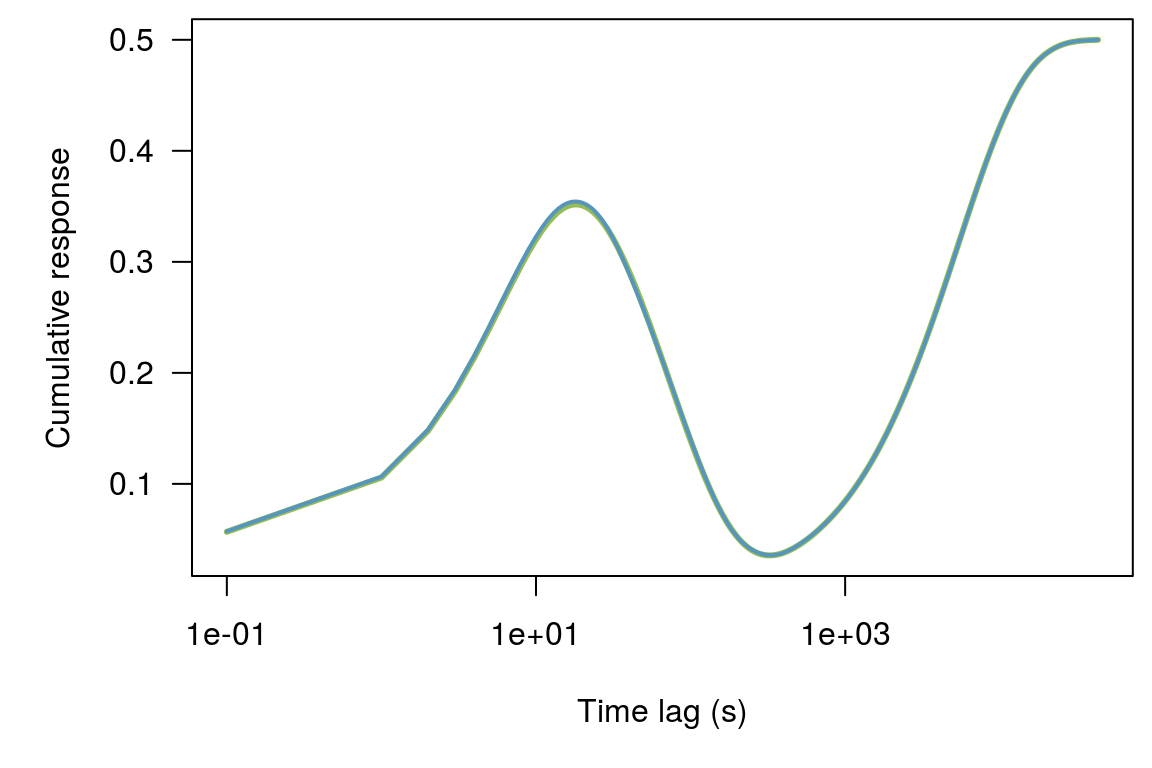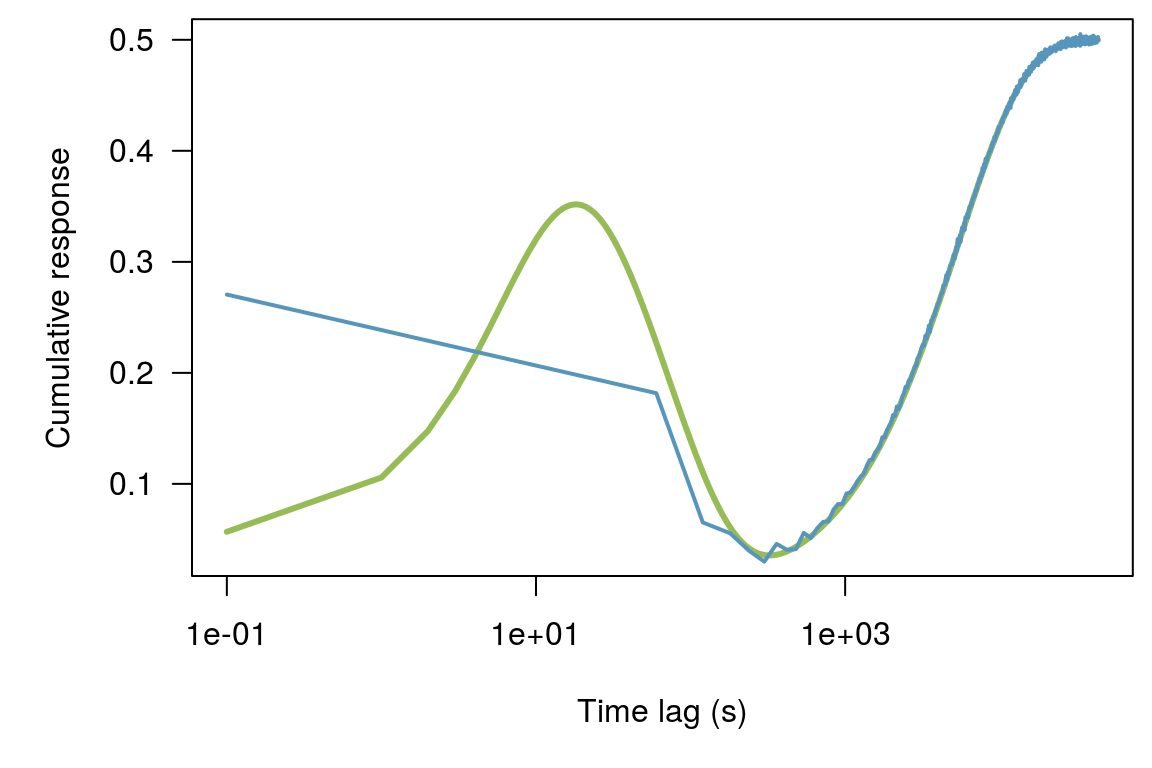Synthetic example
2019-05-13
synthetic_example.RmdIntroduction
To test the efficiency of different methods we will create a response function, apply it to some barometric pressure data to generate a synthetic water level response.
Response function
This is the function we will try to recreate! It is the combination of three exponentials of different lengths:
60 second (negative)
600 second (negative)
43201 second (positive)
exp1 <- -exp(-seq(0.01, 8, length.out = 60))
exp2 <- -exp(-seq(0.01, 8, length.out = 43201))
exp3 <- exp(-seq(0.01, 8, length.out = 600))
exp1 <- exp1 / sum(exp1)
exp2 <- exp2 / sum(exp2)
exp3 <- exp3 / -sum(exp3)
exp1 <- c(exp1, rep(0.0, length(exp2) - length(exp1)))
exp3 <- c(exp3, rep(0.0, length(exp2) - length(exp3)))
kern <- rev(exp1 + exp2 + exp3)
resp_fun <- cumsum(rev(kern))*0.5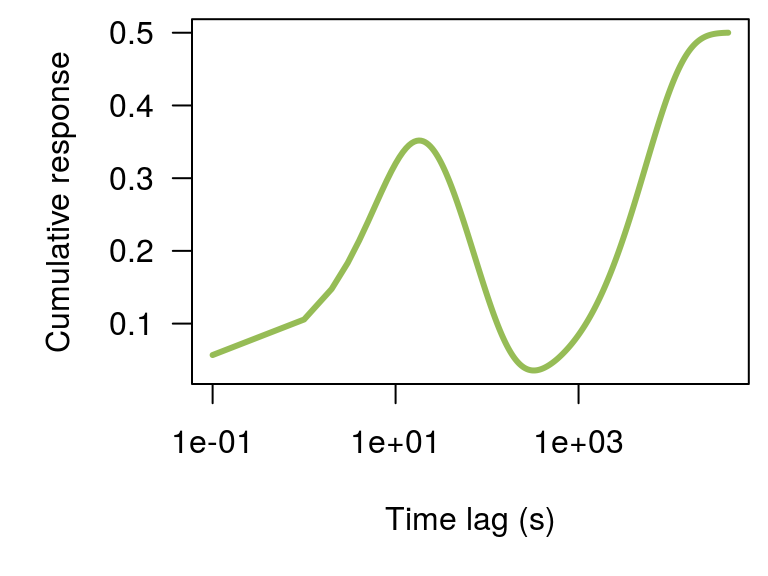
Synthetic water levels
Convolution of barometric pressure data and response function. Water levels have a dampened appearance and are lagged slightly in relation to the barometric response. This is commonly observed at field sites. There is no noise in this example so we hope to perfectly recover the response function.
dat <- synthetic(sd_noise = 0e-2,
sd_noise_trend = 0e-12,
n = 4 * 86400,
linear_trend = 0e-12,
seed = 1,
baro_kernel = kern)[, list(datetime, baro, wl)]
dat <- dat[1:(2.5 * 86400)]
dat[, baro := baro - mean(baro, na.rm = TRUE)]
dat[, wl := wl - mean(wl, na.rm = TRUE)]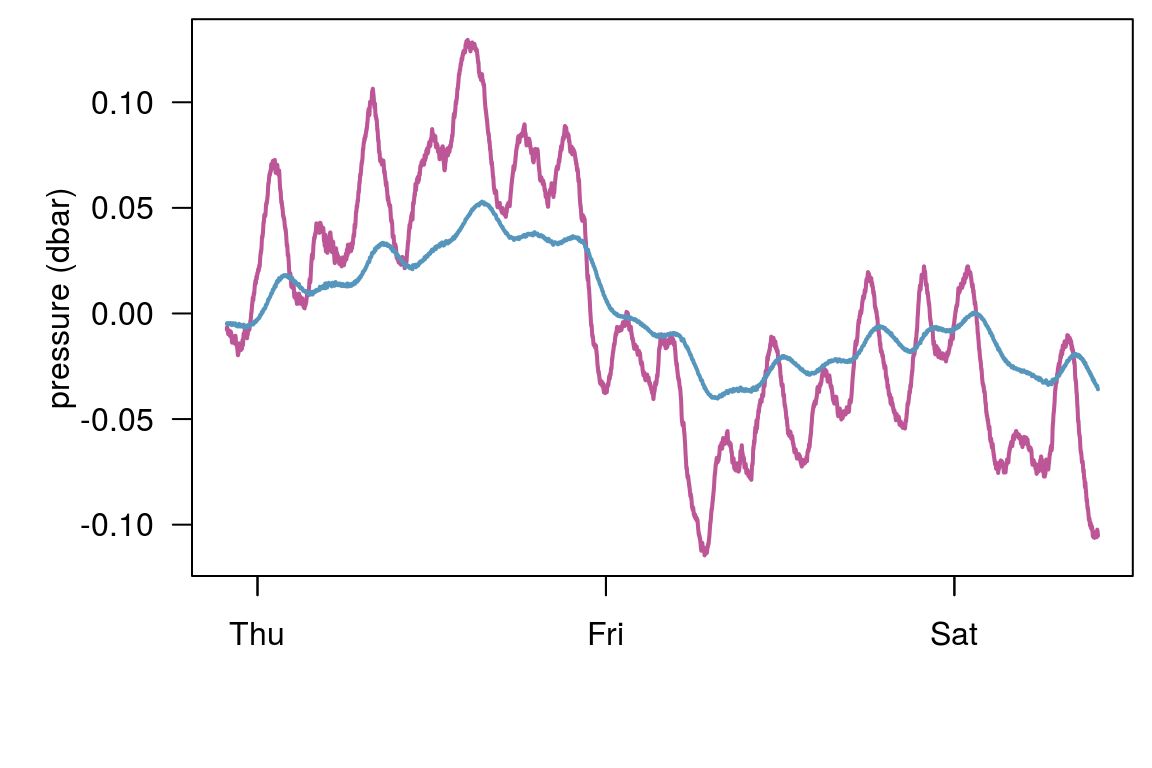
Regular lag method
Regular lag methods can generate large regression matrices, and therefore, we will subset our data prior to analysis. We start with one second data, but will subset to 60 seconds. The matrix size will be
Irregular lag method
We won’t subset in this case. We will use fewer regressors but have many more observations. These results are even better.
ba_lags <- log_lags(251, max_time_lag = 43201)
rec <- recipe(wl~., dat) %>%
step_lag_matrix(baro, lag = ba_lags) %>%
prep() %>%
portion()
dim(rec)
#> [1] 216000 3#> n_obs n_coef df sigma r_squared AIC BIC logLik
#> 1: 172800 201 172599 2.341373e-05 0.9999992 -3194264 -3192232 1597334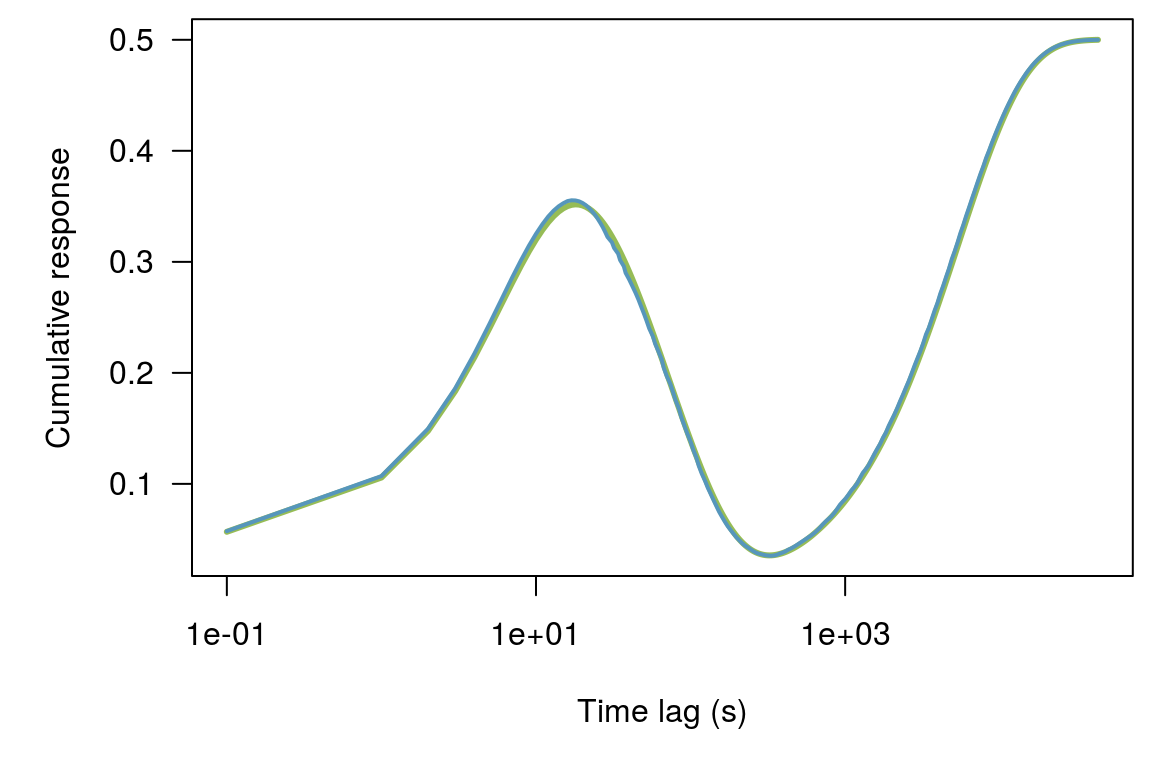
Distributed lag method
We won’t subset in this case and we will only use 15 regressors.
ba_lags <- log_lags(18, max_time_lag = 43201)
rec <- recipe(wl~., dat) %>%
step_distributed_lag(baro, knots = ba_lags) %>%
prep() %>%
portion()
dim(rec)
#> [1] 216000 3#> n_obs n_coef df sigma r_squared AIC BIC logLik
#> 1: 172800 19 172781 5.672424e-06 1 -3684405 -3684204 1842223